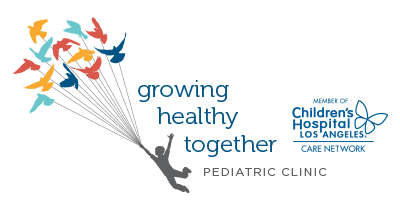 Throughout the 1900s, hospital births became the norm in the United States. Women have rallied for access to hospitals and birth centers in the not-so-distant past. Hospital births have become associated with safety. However, many moms today find that hospital births are unnecessary. Moreover, home births in the United States have increased by 29% in recent years.
Throughout the 1900s, hospital births became the norm in the United States. Women have rallied for access to hospitals and birth centers in the not-so-distant past. Hospital births have become associated with safety. However, many moms today find that hospital births are unnecessary. Moreover, home births in the United States have increased by 29% in recent years.
Please note that studies of home births versus hospital births are challenging because you cannot randomize who gets to give birth at home and who gets to give birth in the hospital. Therefore, studies of home births versus hospital births are typically surveys of those who have already given birth.
What are home births?
Home births describe any delivery that does not occur in a hospital. They are usually attended by a midwife, though not always. According to the CDC, in 2009, 62% of all home births were attended by midwives, while physicians attended 5%.
Home births do not necessarily occur in a tub, as popular culture may draw you to believe. Women who give birth at home can give birth anywhere in their homes, including in bed, in the living room, or in a birthing tub.
In addition, women often choose to give birth at an accredited birthing center, which can mimic the comfort and control of home birth. Accredited birthing centers have licensed clinicians who can appropriately assess you and your child during labor. They also have access to basic emergency equipment and can help support laboring mothers and infants in the case of an emergency.
Home births are more common in older women (aged 35 and over) who have already given birth to previous children. Women who choose to birth at home may have a lower risk profile with few to no complications. Complications for home births include women giving birth for the first time, women who have previously given birth via cesarean section, preterm infants, breech infants, low birth weight, and multiple births.
Why choose home births?
- No access to care, including living in a remote location or lack of transportation
- No health insurance and costs associated with giving birth in a hospital
- Distrustful of hospitals and hospital staff
- Fear of developing a hospital-related infection
- Wanting to be in charge & go at own pace
- “I’m not sick. Why would I go to the hospital?”
- Comfort of home
- Religious concerns
- Avoiding medical intervention like medications to induce or speed up labor, pain medications, electronic fetal heart rate monitoring, forceps, vaginal vacuum delivery, cesarean delivery, and tears or incisions of the vagina.
Home Birth Risks
Risks for complications during home births are somewhat higher than hospital births by about 0.5 to 2 births per 1,000. However, the risk for complications both in and out of the hospital is low.
Keep in mind that some women who plan on giving birth at home may end up heading to the hospital anyway. About 15% of women planning to give birth at home end up needing to transfer to the hospital. The risk of needing a transport mid-birth is 23-37% for women giving birth for the first time, and 4-9% for women who have given birth before. Typically, women transfer to the hospital mid-delivery because their baby is malpositioned, bleeding, hypertension, lack of labor progress, need for pain medications, and because they are unsure of their baby’s status.
If you live in a remote location far from your nearest hospital, you may be at a higher risk of complications during transport. Women who have a delayed or prolonged trip to the hospital during labor have a higher risk of intrapartum and neonatal death.
The hospital is safer than giving birth at home in the case of an emergency. If something does go wrong and your infant is in distress, it is better to be in a hospital where there is a team of providers who can manage an obstetric emergency. However, it is difficult to tell which births are going to result in an emergency at the start of labor.
Considerations for Hospital Births
Cesarean sections are much more likely in hospital births. About 30% of hospital births are C-section births. Risks of C-sections include blood loss, infection, pain, and a higher likelihood of needing a C-section for future births. According to Harvard Health, “from 1970 to 2010, the rate of U.S. cesarean delivery doubled.” This uptick in cesarian deliveries has some women concerned, driving many more to choose home births.
However, many women feel more comfortable giving birth in a hospital, where there are many more experts available. Hospitals can better monitor your infant’s wellness during labor with more advanced technology. Hospitals also can provide you analgesics for your pain during birth. In addition, hospitals usually have access to more services, like lactation consultants and infant education. Your health insurance may cover your hospital stay, however, they may not cover your home birth.
 Home Birth Support
Home Birth Support
If fewer women choose to give birth at home, this removes some of the infrastructure supporting midwives, doulas, and other groups. As more women give birth at home, this strengthens the foundation of midwives in their area.
For a recommendation of midwives in your area, please talk to your provider. They will be able to point you in the right direction. We like Beach Cities Midwifery for our patients here in Long Beach, California. We also collaborate with South Coast Midwifery and other midwives and birthing centers.
At GHT, we support your decisions. We see the benefits of both perspectives and we’re here to assist you and your family in your choice. However, we ask that you keep us, your pediatric healthcare providers, in the loop. We’re here for your questions, your concerns, and to provide the compassionate care that you deserve.
For questions or comments, please respond to this page or contact us.




